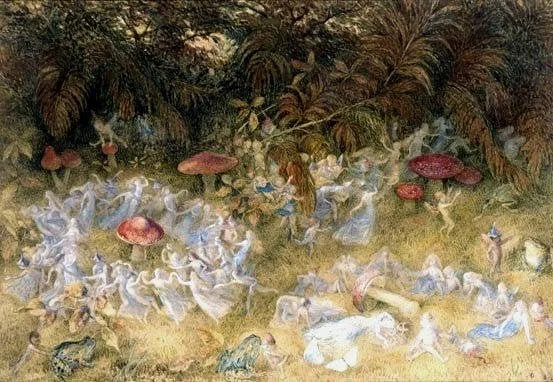What Are Fairy Rings and How Can I Find Them?
We all remember the smurfs or some other fantastical show where a ring of mushrooms create a magical world. Nature is known for activating our imagination with its uniqueness, creativity, and sci-fi like worlds. But if you want to keep believing in the magic side of fairy rings, you may not want to read on.
Fairy rings are as old as 2,000 years with some covering 500 hectares in Switzerland and some weighing as much as 10,000 kg. They are amongst the largest living organisms on Earth and their longevity is remarkable, particularly considering that they belong to microbiological life forms.
Where Did The Term Come From?
Terms such as “Cerchio delle streghe” in Italy, “Rond de sorcièr” in France and “Corro de brujas” in Spain reflect these mystical associations, as many believed the rings were the result of sorcerers’ activities.
Fungal fairy rings are fascinating natural phenomena that have intrigued people and scientists for centuries. In English and Celtic folklore, the rings were believed to be caused by fairies or elves dancing in circles.
In Scotland it was believed the fairies sit on the mushrooms and use them as tables for their fetes, while in Wales the story goes that the mushrooms were picked by the fairy folk and used as parasols or umbrellas.
The Austrian tradition said flying dragons caused the rings, blighting the area so only toadstools could grow there for seven years.
If you dare to enter a ring, many myths warn you will die young. You also become invisible to the mortal world, unable to escape the ring, or you are transported instantly to the fairy realm. You might also lose an eye for your foolishness. Either way, you will be forced to dance around the ring until you die of exhaustion or madness. Dutch traditions tell of fairy rings that were created by the devil as a place to keep his milk churn, and any livestock that were to enter said circle would suffer the souring of their own milk.
Why Do Fairy Rings Form?
These patterns, often represented by circular distributions of altered vegetation, are found in grasslands and forest habitats. Over 100 different species of fungi cause fairy rings to form, but the most common is from Basidiomycetes.
Early researchers proposed various potential causes for fairy rings, including activities of subterranean mammals, ant colonies, deposits of feces and urine by herbivores.
In 1675, scientists from the Royal Society thought that the dark green circles associated with fairly rings had “electrical origins” tied to lightning bolts.
The reality is that fairy rings begin centrally then underground branches called mycetes grow out in a circle. Basically as the fungi consume the organic matter, like leaves, in the soil they destroy themselves, leaving the area barren, until a large circle forms.
Where Can I Find Fairy Rings
Fungal Fairy Rings are found in many places, ranging from woodlands to grasslands and are widespread globally. Though the top five places they have been found are in the United State, UK, Canada, China and Germany.
The best time of year to see them is late summer to early autumn, and they are more likely to appear after wet weather.
Undisturbed environments with moderate nutrient levels and abundant decomposing organic matter are good for fairy ring formation.
Adequate, but not excessive, rainfall is a critical factor for fairy ring formation. Many are found more often on north-facing slope.
They occur more in sloped areas compared to flat zones, where stagnant water and soil hypoxia inhibit fungal development.
Soil type is another key factor in fairy ring formation. Many are found in Aridisols and Mollisols. They don’t tend to like too much nitrogen, often found in farm fields.



